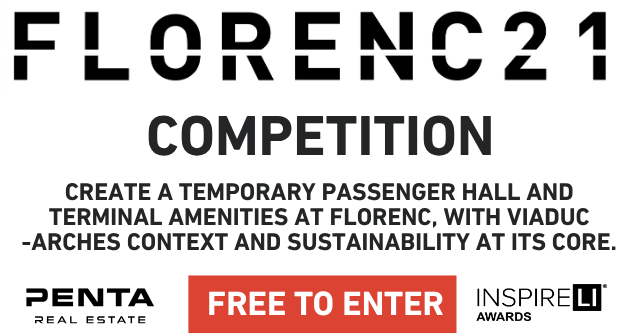THE FRIDGE MANIFESTO
Idea projektu
Žijeme v dobe, keď plytvanie potravinami už nie je triviálnou voľbou: je to čin s ďalekosiahlymi dôsledkami. Nadmerné nakupovanie a vyhadzovanie potravín bez rozmyslu prispieva k zhoršovaniu klimatických zmien a zvyšovaniu našej uhlíkovej stopy. Chladnička umiestnená v centre trhu je výzvou k uvedomelosti a zodpovednosti. Tento pavilón nie je len prístreškom, je to symbol. Pripomína nám, že každá potravina má svoju hodnotu, každý zdroj má svoj limit. Oslavuje jednoduchosť a udržateľnosť, spája postupy predkov s modernou ekologickou víziou. Chladnička, postavená z miestnych materiálov - piesku a hliny - a vytvarovaná starobylým remeslom hlinených tehál, stelesňuje harmóniu medzi človekom a prírodou. Jeho dvojvrstvové steny vyplnené vlhkým pieskom sú inšpirované "púštnou chladničkou" a vytvárajú prirodzene chladný priestor bez technológií, využívajúci princípy samotnej prírody. Chladiaci pavilón nie je len stavbou: je to pripomienka a výzva k činom. Každý návštevník a obyvateľ v ňom môže nájsť inšpiráciu - zmeniť svoje návyky, žiť v rovnováhe s prostredím a predstaviť si budúcnosť, v ktorej sa každý čin počíta
Popis projektu
Trhy sú plné farieb, vôní a ruchu ľudskej činnosti. Napriek tomu sa na konci každého trhového dňa vyhodí značné množstvo potravín. Pri prechádzke týmito živými priestormi sa vynára otázka: čo s tým môžeme urobiť? Navrhovaný pavilón ponúka hmatateľné riešenie - samočinnú prírodnú chladničku inšpirovanú púštnymi chladničkami, ktorá nepoužíva elektrinu a spolieha sa na odparovacie chladenie. Táto konštrukcia vyrobená z prírodných, miestnych materiálov uchováva potraviny čerstvé a zároveň pozýva ľudí do priestoru reflexie a uvedomenia. Je to tichý zásah, ktorý hovorí: naše zdroje sú vzácne - využívajme ich múdro. Lokalita a podnebie: Projekt je určený pre Versailles vo Francúzsku (48° 48' 15,85" s. š., 2° 07' 23,38" v. d.), kde panuje teplé, mierne oceánske podnebie (Cfb). Teplé obdobie trvá od júna do augusta s priemernými dennými teplotami nad 25 °C, zatiaľ čo chladnejšie obdobie trvá od novembra do marca s priemernými teplotami pod 10 °C. Celoročná priemerná teplota je 11,3 °C a ročný úhrn zrážok je približne 720 mm. Vďaka tomuto klimatickému kontextu je odparovacie chladenie obzvlášť účinné počas teplejších mesiacov a zabezpečuje sezónny význam pre uchovávanie potravín. Okrem funkčnosti evokuje kupolovitý dizajn pavilónu chladivý pokoj katedrály svätého Ľudovíta, ktorý sa pohráva so svetlom a tieňom a vytvára upokojujúci zážitok. Návštevníci sú vyzvaní, aby si nielen vzali alebo darovali potraviny, ale aby sa zastavili a zamysleli sa nad vplyvom svojej spotreby
Technické informácie
Chladnička funguje na princípe odparovacieho chladenia, pasívnej a energeticky nenáročnej metódy, ktorá sa bežne používa v tradičných púštnych chladničkách. Systém je postavený s dvojvrstvovými stenami, pričom priestor medzi vnútornou a vonkajšou vrstvou je vyplnený vlhkým pieskom. Keď sa voda v piesku odparí, absorbuje teplo z vnútornej komory, čím sa teplota vo vnútri zníži až o 10 °C - je to účinné riešenie na uchovávanie ovocia, zeleniny a iných rýchlo sa kaziacich predmetov počas teplých mesiacov. Samotná konštrukcia je zložená z miestnych a prírodných materiálov. Vnútorná vrstva je vyrobená z terakotových tehál, ktoré boli vybrané pre ich pórovitosť a schopnosť zadržiavať vlhkosť. Vonkajší plášť je postavený z hlineného betónu, zmesi hliny a piesku získanej zo samotnej pôdy Versailles. Táto voľba nielenže zlepšuje tepelné vlastnosti, ale tiež posilňuje záväzok projektu k udržateľnosti a miestnemu získavaniu zdrojov. Z architektonického hľadiska má pavilón tvar kupoly, inšpirovaný neďalekou katedrálou svätého Ľudovíta. Táto forma je nielen symbolická, ale aj funkčná: vertikálna štruktúra podporuje prirodzenú cirkuláciu vzduchu a otvor v hornej časti funguje ako tepelný komín, ktorý umožňuje únik teplého vzduchu a zároveň vytvára dynamickú hru svetla a tieňa v priestore. Táto konštrukcia prispieva k pokojnej, reflexnej atmosfére - chladí fyzicky aj emocionálne. Na udržanie vlhkosti potrebnej na odparovacie chladenie je pavilón vybavený retenčnou nádržou, ktorá zhromažďuje vodu používanú počas čistenia trhov. Malá ručná alebo solárne napájaná pumpa cirkuluje túto regenerovanú vodu, aby udržiavala vrstvu piesku primerane vlhkú, čím zabezpečuje nepretržitý chladiaci výkon bez toho, aby sa spoliehala na moderné chladiace systémy. Medzi ideálne miesta inštalácie patria trhy v Saint Louis, Potager du Roi alebo spoločné mestské záhrady, kde môže konštrukcia plniť funkčnú aj vzdelávaciu úlohu. Okrem toho, že chladnička predlžuje životnosť nepredaných alebo darovaných potravín, podporuje verejné úvahy o plytvaní potravinami, udržateľnosti a inteligentnom využívaní prírodných zdrojov.
Projekt odovzdaný
15. 06. 2025Štítok
Rady študentom


